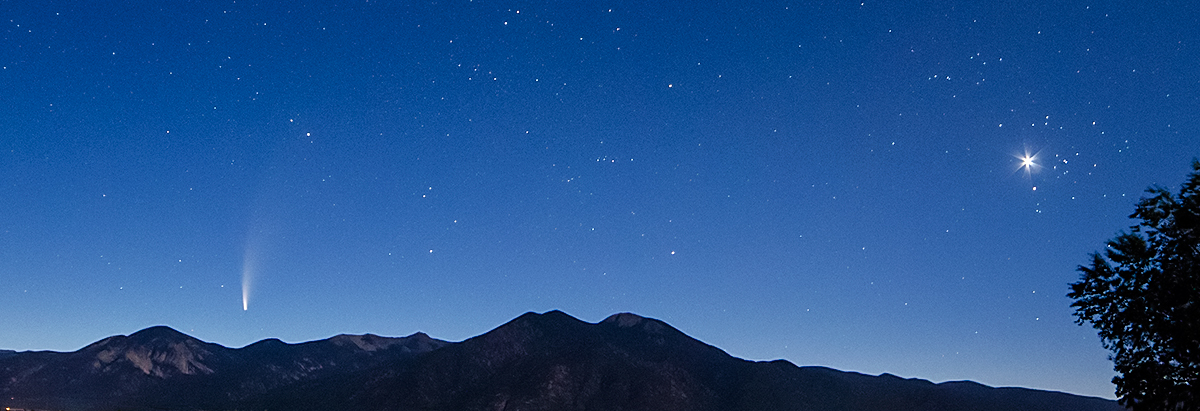
Welcome to taosastronomer.com!
offering
local "hands-on" observing
(visual and imaging) sessions and instruction
viewing and imaging from Rabbit Valley Observatory
a dark sky location on the mesa just west of Taos, NM
Post-Processing of Acquired Images |
Following the initial imaging run, much fun (or work, depending on your state of mind!) is still necessary to obtain a fine, perhaps even printable or publishable result. After the "light frame" images are obtained by photographing the actual subject-object, "dark frames" need to be shot. This is not all that challenging; one must merely optically cover the imaging scope and take multiple shots of essentially nothing ("dark frames," as they are known) to subtract out the thermal noise of the non-cooled DSLR camera (the heat is generated by long exposures, often 300 seconds or longer) -- these "darks" are obtained in the now-closed and locked observatory via a sophisticated automated image-acquisition software package for DSLRs, or additionally-offered automated programs for astronomical cameras, at night after you've retired for the evening. The next morning, it is important to then obtain what are called calibration images. Without going into what is probably some of the most difficult mathematics involved in astro-imaging (although I understand the concept, I personally have no clue as to the actual math calculations), suffice it to say that certain calibration frames (additional photographs taken with the same camera in various simple set-up configurations) are shot rather quickly and easily inside the observatory. When done, all of these images are transferred by flash drive to a computer to "post-process" the images. And, to everyone's great benefit, all of the mathematical heavy lifting has already been accomplished with yet another group of sophisticated computer programs. All you need to do is set certain parameters, and the program(s) combine, calibrate and stack the images. This output is illustrated by the initial (rather unimpressive but clean and in focus) stacked image of the Pleiades (M45) to the right, upper. Finally, this image file -- actually possessing all of the components needed -- is post-processed (an artistic, subjective and creative affair, to say the least), incredibly resulting in the next image to the right, lower. A recent (2022) observing log is available from this text link -- it gives the reader a bit of an idea what the process involves. The object of this tutorial is pictured to the right and below the Pleiades example. taosastronomer.com will work you through this process, provide you with a DVD/flash drive containing your image files and and subsequently post your final efforts as demonstrated below by linking to your personal (fabulous) image(s), and will credit you with the following byline: [copyright Rabbit Valley Observatory/(your name), 20XX, all rights reserved] |
|
Below is another example of what can be accomplished in the post-processing step . . . |
This news just in -- astrophotos are photographic art (we all knew that, right?)! Willis Greiner's "Orion and Running Man Nebulae" and "Horsehead and Flame Nebulae" accepted into the prestigious Taos Select fall 2015 art show! |
|
To correctly and accurately view images such as those seen on this website, it is important to adjust your computer or device's monitor to the neutral gray scale above. First of all, every sector seen above should appear to be shades of a neutral gray -- gradually moving from black to white -- further, each segment should be independently visible, not "oozing into" one another. When your device is correctly calibrated (not so difficult) you will be able to view the images as they were created and intended to be seen. |
(all content copyright 2015-2022 Willis Greiner Photography, all rights reserved)